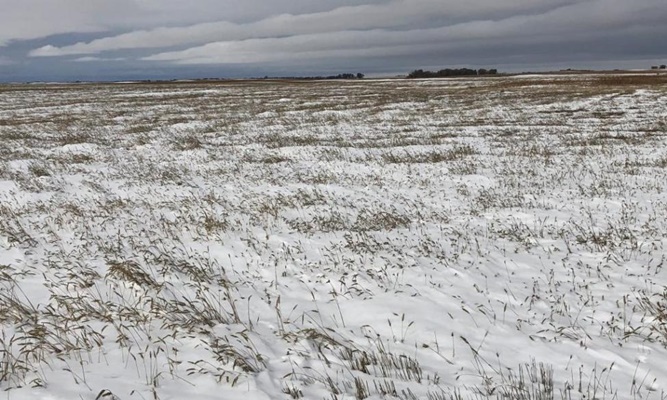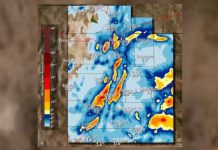
EVANSVILLE, Ind., Oct. 15 (UPI) — After experiencing record-breaking rains, followed by a freak fall blizzard, farmers across the Great Plains have not been able to harvest their crops.
And unless Mother Nature begins to cooperate by keeping temperatures warm over the next couple of weeks, many farmers fear those crops will be lost.
“The days are fading away awful fast without much progress,” said Shayne Isane, a Minnesota farmer who grows corn, soybeans and other commodity crops. “We’re getting closer to winter and we have a lot of crops to get out yet.”
In normal years, winter weather hits much of the Upper Midwest portion of the Great Plains around the beginning of November, Isane said. After that, it is too late to bring in most crops.
That means, farmers have about two weeks to carry out their harvest — or lose it.
“Nobody really knows what will happen because we don’t know what the weather will be,” said Luther Markwart, the executive vice president of the American Sugar Beet Growers Association. Most of the sugar beets in the country are grown in the Great Plains area that was hit by last week’s blizzard.
“So, the stress level is off the charts for these guys,” Markwart said. “Just think if your entire year’s paycheck was made in the next two weeks — or not.”
It’s been a rough growing year from the start in the Midwest, especially the Great Plains regions.
Spring brought record flooding to several Midwestern states, which delayed planting by several weeks. That meant the majority of this year’s crops had to be harvested later than usual. Before that harvest could begin, record-breaking rains and flooding returned to the Great Plains in the fall.
“We got 13 inches of rain in the last three weeks of September,” said Don Steinbeisser Jr., a Montana grower whose farm sits a few miles west of North Dakota. “Our average, rainfall for the year is 12 inches. We’re just not set up to get that kind of rain.”
Farmers from Montana to Minnesota all reported the same issue — heavy rains had soaked their fields just when they were hoping to begin harvesting.
The rainfall kept crops from properly drying, something farmers need so they can store them. It also made the fields too wet for tractors. Thousands of farmers were left idle, waiting for the sun to dry the ground enough so they could work.
Then, late last week an unseasonable fall blizzard hit the northern Great Plains, blanketing the unharvested fields.
“We ended up with some areas getting between 2 to 3 feet of snow,” said Daryl Lies, the president of the North Dakota Farm Bureau.
The snow might not destroy all the unharvested crops, Lies said.
Corn can often withstand freezing temperatures and still be used. In some cases, corn can freeze in the field all winter and still be harvested the next spring.
Soybeans are more fragile, but if the weather warms quickly in the coming weeks, they still might come out of the ground. The weather is turning warmer in many places this week. Temperatures were in the mid- to high-40s in North Dakota on Monday, according to the National Weather Service.
Wheat and other grains are less likely to survive.
“It’s kind of a waiting game,” Lies said. “Once the snow melts, we’ll have to see what’s still standing and what can be harvested.”
But even if some crops can be harvested, the melted snow will add yet more water to already soaked fields.
Sugar beet growers could be in particular trouble, Markwart said. Like other crops, few sugar beets have been harvested yet this year because of the unseasonably wet fall. And sugar beets can handle some cold weather — but not much.
“It will take 14 to 15 days of digging to get all the beets out,” said Isane, who grows sugar beets in eastern Montana. “We’re all antsy to get going.”





